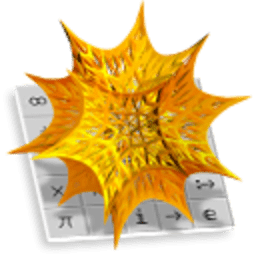
![]()
Mathematica
Alternatives to Mathematica
Missing a software in the list? We are always happy if you help us making our site even better.
Mathematica Reviews
We have 1 review for Mathematica. The average overall ratings is 4.0 / 5 stars.
Overall Opinion: Sometimes there are mathematical proofs or formulas that can't be done by hand, and sometimes there are some that can't be run even through conventional modern calculators. For instances like these, Mathematica is the most sensible solution around. Despite being first developed in 1988, Mathematica has managed to remain relevant, and it's managed to do so because of the solid principles underlying the software. Mathematica's basic interface is based off of two major components. The kernel serves functionally as the back end for the software, running and interpreting code while the front end offers many of the features you'd find in a standard coder's text editor. Syntax highlighting is standard, and a debugger is also included. Users can create their notebooks on the front end that allow them to keep track of results and comment on other relevant information. These notebooks are highly versatile and eminently functional. While they support embedded coding and plain text, they also allow users to store graphics, user interfaces, tables, and a number of other useful components. The language used by Mathematica is proprietary but designed explicitly to put ease of use first. This Wolfram Language is heavily documented and used for a variety of purposes throughout the scientific and mathematical fields. What makes Mathematica such a great program for data visualization and other numbers-first approaches to mathematics is its laser focus. The Wolfram language, and Mathematica more specifically, is designed for running calculations, and it offers a huge library of resources in pursuit of that singular purpose. Over 5,000 built in functions are included directly out of the box. These offer a sweeping range of tools for mathematicians with countless practical purposes. All the libraries are integrated directly into the code base, so there's no need to manually import libraries or functions just to make sure that the code you right is properly interpreted, and there's no risk of conflicting function names messing with the final results. While Mathematica is by no means intended for use by inexperienced mathematicians or coders, it does include some helpful features that can assist with the process of getting eased into the complex systems at play. Interactive help menus cover just about everything you could expect, and they neatly outline everything from basic principles to higher functions in easy to digest and laborious detail. There's also the notion within the Wolfram language that everything is an expression. This allows users to put aside some of the more complex notions of programming and focus more thoroughly on the mathematical end of things. Over 150,000 examples and available for free directly through the Mathematica database. Mathematica interfaces directly with the cloud, making it easier to share results with your peers or collaborate with your colleagues.
Pros: Frequent updates allow the program to grow to meet the changing needs of scientists and mathematical researchers Notebooks allow the storage of a huge breadth of information, integrating the research elements with the execution Great documentation and sample tests to help get acquainted with the system
Cons: Steep learning curve to understanding the language and interface Interpreter can sometimes be sluggish
Features
Comments
About This Article
This page was composed by Alternative.me and published by Alternative.me. It was created at 2018-04-30 07:07:44 and last edited by Alternative.me at 2020-03-06 07:50:51. This page has been viewed 25350 times.